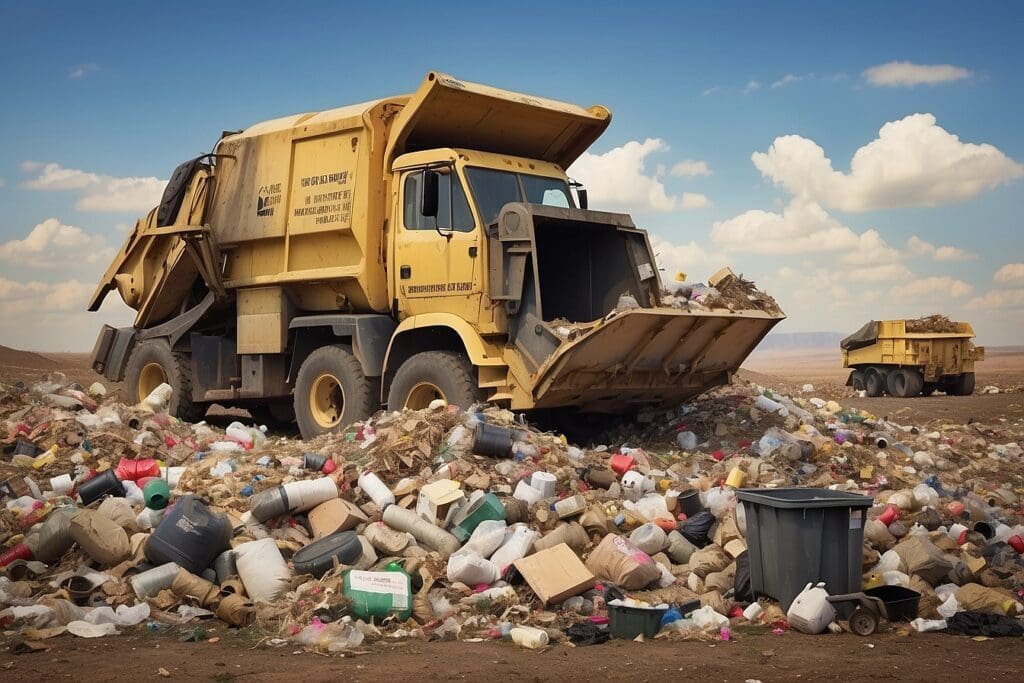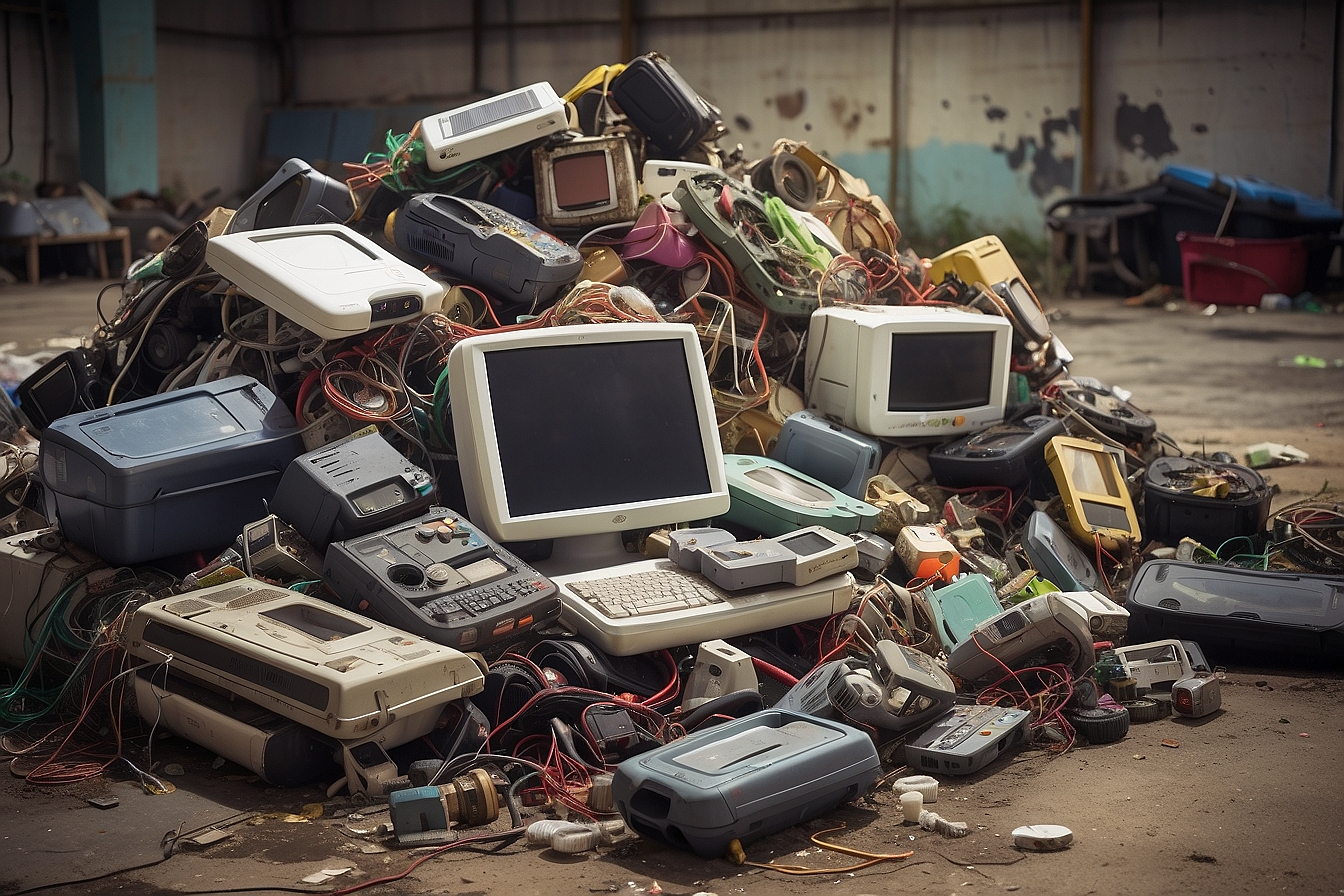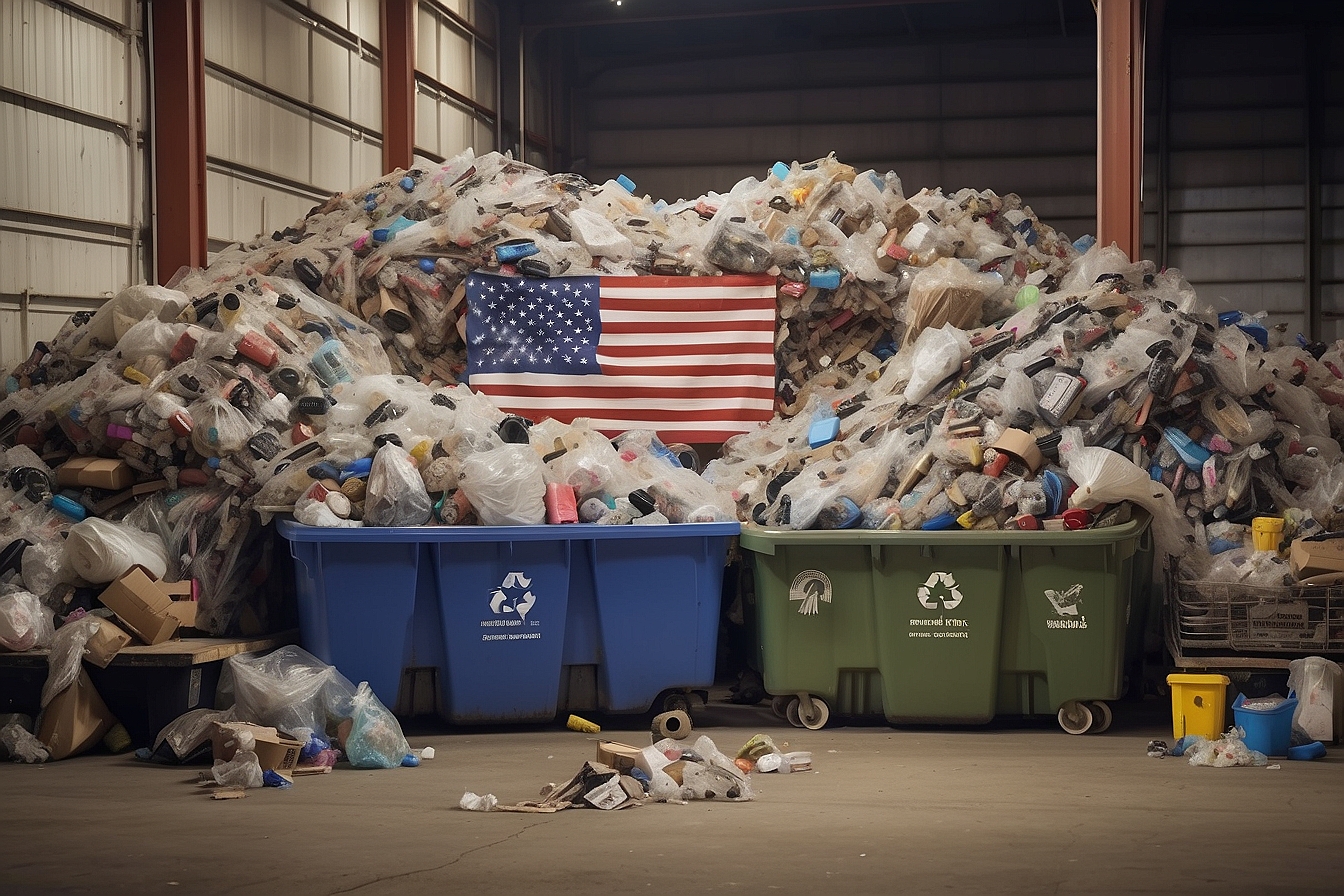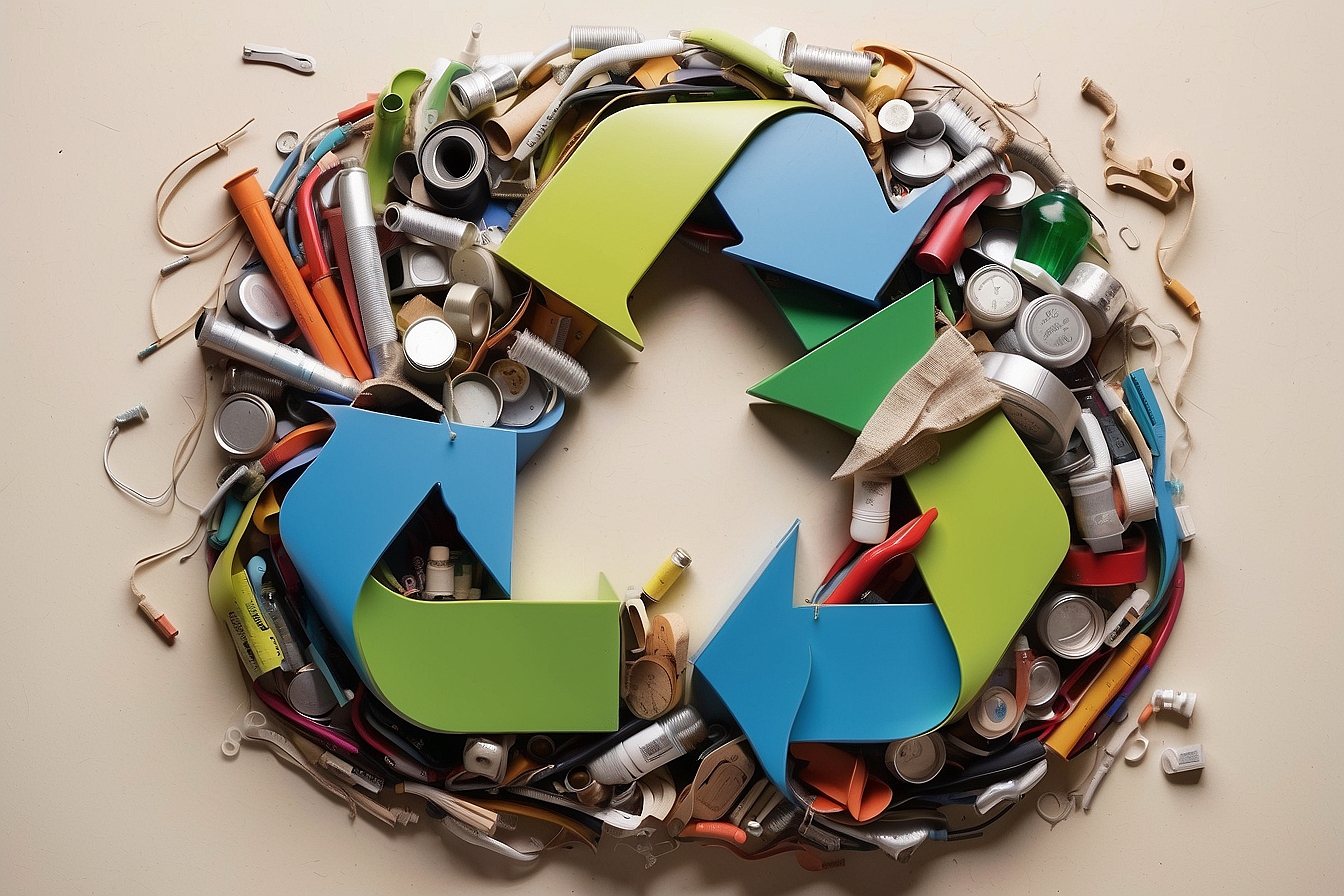You often see three curbside bins to sort waste into: the black landfill bin, the blue recycling bin, and the green compost bin. Which bin to put what, that is the question that one typically faces. Beyond knowing which items can go into which bin, it is important to know how the condition of your waste impacts the environment.
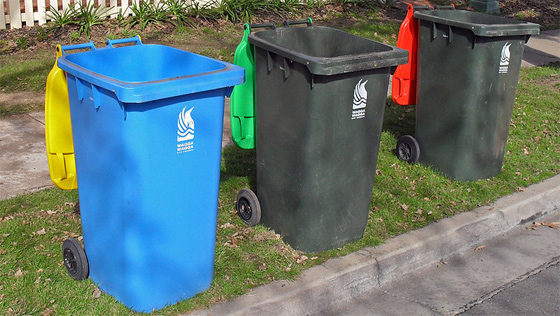 i
i
Which Items Go in Which Bin?
Garbage. Recycling. Compost (not available in all locations). These three lists may vary slightly city to city. Check your local waste management website for personalized information. However, you’ll find that many more items can be recycled or composted than you initially thought. I’ve unknowingly been erroneously putting cotton balls in my landfill bin for years!
Recycling:1
- Metal items
- Aluminum cans, foils, trays
- Metal caps and lids from bottles and jars
- Empty and dry paint cans and spray cans
- Tin cans
- Plastic items
- Bottles and caps
- Buckets (even if have metal handle)
- CD’s, DVD’s and cases (remove paper insert)
- Containers and Tupperware
- Coffee lids
- Corks, cups, and utensils
- Flower pots and trays
- Toys
- Glass items
- Bottles and jars
- Paper items (must be dry and unsoiled)
- Bags
- Cardboard (non-waxed)
- Cereal boxes
- Computer paper
- Egg cartons
- Envelopes (even with plastic windows)
- Junk mail and magazines
- Newspapers
- Packing paper
- Phonebooks
- Sticky notes
- Shredded paper (place in sealed paper bag and label “shredded paper”)
- Non-metallic wrapping paper
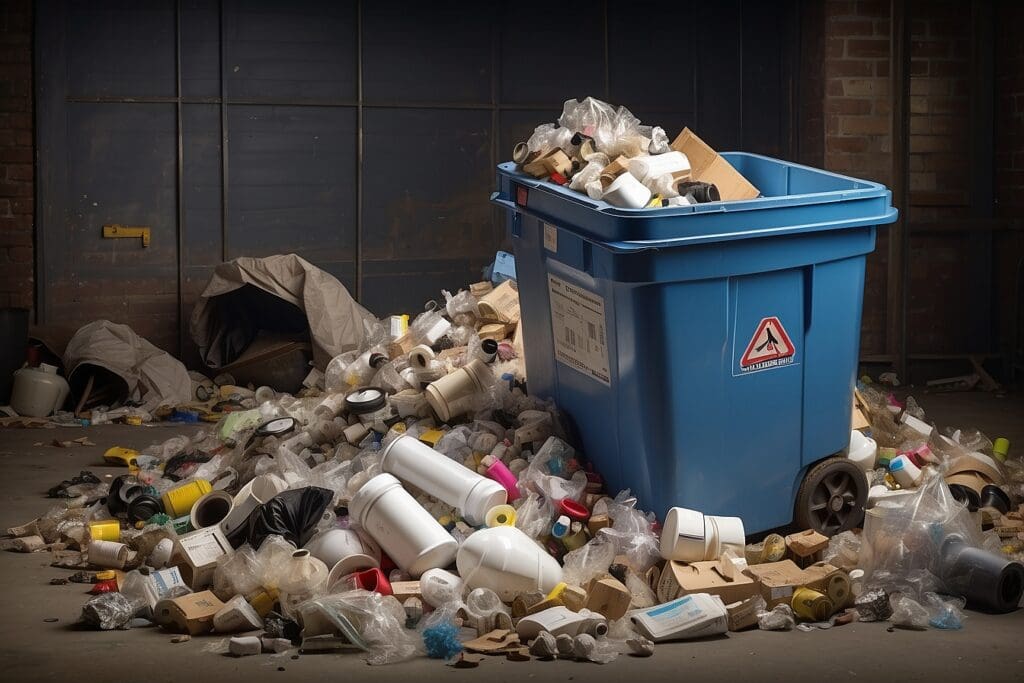
Compost2 (when available and this varies the most so check with your waste management company before putting anything other than yard waste into your compost bin):
- Food scraps
- Bread, grains, pasta
- Coffee grounds
- Dairy
- Eggs and eggshells
- Fruit (including pits)
- Meat (including bones)
- Seafood (including shells)
- Tea bags
- Vegetables
- Food-soiled paper
- Paper coffee filters
- Greasy pizza boxes
- Paper cups and plates
- Paper ice cream containers (even with metal/plastic rim)
- Paper bags, napkins, tissues, towels
- Paper takeout boxes (even with metal handle)
- Waxy paper milk and juice cartons (no foil liner but plastic spout is okay)
- Plants
- Branches
- Flowers and floral trimmings
- Grasses
- Weeds
- Leaves
- Other
- Cotton balls and swabs
- Non-synthetic hair, fur, and feathers
- Utensils labeled “compostable”
- Vegetable wooden crates
- Waxed cardboard and paper
- Wooden chop sticks
Landfill:3
- Bagged cat litter and animal feces
- Ceramic dishware and glassware
- Clothing linens and rags
- Extinguished cigarette butts (run under water before disposal)
- Dental floss
- Diapers
- Feminine hygiene products
- Foil-backed or plastic-backed paper
- Glass mirrors and windows
- Incandescent light bulbs
- Milk or juice cartons with foil liner
- Mylar bags (potato chips, candy, etc.)
- Pens and pencils
- Plastic bags
- Plastic labeled “biodegradable”
- Six-pack ring holders (cut up)
- Sponges
- Styrofoam
- Twist ties
- Plywood, pressboard, and painted/stained wood
Proper Waste Disposal Practices
Some of the items listed above have disposal procedures that go along with them but that many people do not know about. Some of our waste does not make it to landfills or facilities and is instead dumped into the environment exactly the way you disposed of it. Improper waste disposal can pollute habitats and have fatal impacts on wildlife. However, proper waste disposal can decrease the detrimental impacts if your waste does happen to be dumped into, for instance, the ocean.
Here are a few tips on how to properly dispose of certain items:4
- Wash all containers before disposing of them. Many animals will try to eat the food residue off of containers, which can lead to them swallowing packaging material and choking or getting their head stuck in the container and suffocating.
- Put lids back on containers tightly. If you lost the lid, crush the container. Again, this will prevent animals from getting their head stuck in the container and suffocating.
- Use a can opener that opens cans below the lip of the lid, leaving smooth edges. Remember to completely separate the lid from the can. Sharp edges can cut animals’ tongues and paws as they try to eat food residue off the can.
- Cut up all six-pack beverage holders and similar packaging so that there are no closed rings. These rings can get stuck around an animal’s mouth, nose, and/or neck, leaving the animal unable to breath, eat, drink, or defend themselves.
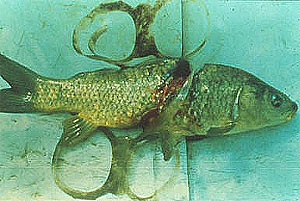 iii
iii - Use animal-proof trash containers. Trash containers with bungee cords or locks will prevent animals from rummaging through your garbage and attempting to eat it. They will also prevent waste from being scattered around your sidewalk the night before trash day.
- Recycle all plastic bags at your local grocery store instead of putting them in your landfill bin.
- Cut fishing line into small pieces.
- Switch to brands that use less packaging or buy items in bulk to cut down on packaging.
- For information on how to properly dispose of household hazardous waste, such as LED light bulbs check out: Toxic Waste

